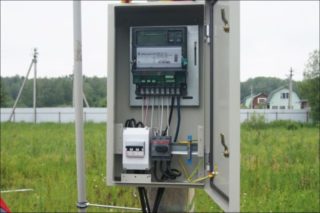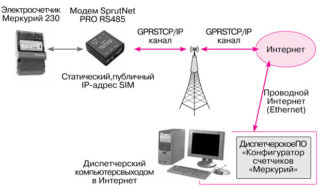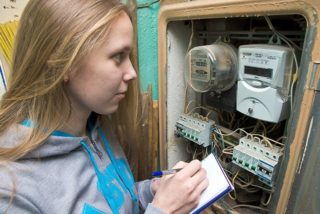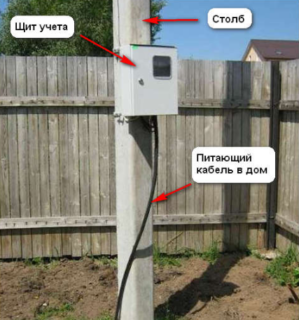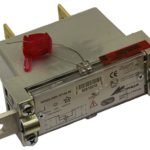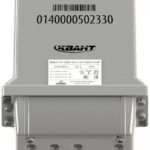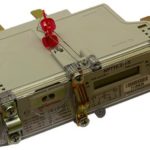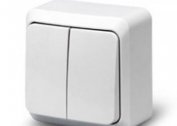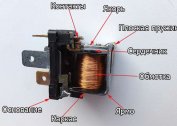The technique of automatic metering of consumed electric power by consumers is constantly being improved. An electricity meter with remote reading is one of the latest technical tools to fully automate this process. The person responsible for accounting for electric energy can only record changes in the testimony of the control device while at a control center remote from the facility.
Principle of operation
An electric meter with remote reading is a device of a special design, located in an introductory cabinet or on a pole of a high-voltage line to enter the house. With its help it is possible to organize the accounting of data on consumed energy via the Internet. Software pre-installed in the device allows you to read and send the necessary information to the servers of the energy company responsible for the supply of electricity to the consumer.
Using such devices, it is possible to automatically track and adjust the accounting process, which significantly affects its effectiveness. The principle of operation of a meter on wires is easiest to understand if you familiarize yourself with the functionality of the electronic components built into it.
Start with a microcontroller that performs the following functions:
- credential processing;
- Bringing the information to the desired form;
- its output to the LCD display;
- receiving and processing control commands.
In addition, the automated accounting system includes a well-functioning interface and a special converter that presents information in digital form. With this composition of technical equipment, new electricity meters on poles with remote reading are very effective. With their help, it is possible not only to organize the transmission of data to the electricity supplier, but also to constantly monitor the status of the electricity network.
A number of modern models allow you to adjust the level of consumption in a particular sector of the common line. If the permissible value is exceeded, they can automatically stop the accounting process by completely disconnecting the meter from the input cable. For these purposes, the control equipment has a special contactor that blocks the supply of energy when the limit is exceeded, or in the absence of prepayment data.
Application features
When considering the features of remote meters, it is noted that the energy company is provided with information that is not available to conventional metering devices. Their application is characterized by advanced functionality that allows you to implement the following features:
- presentation of information in multi-tariff format;
- remote management of individual consumers (with the possibility of their switching);
- communication with the client through the exchange of notifications.
To this is added the ability to analyze the information provided, which allows to increase the efficiency of the control equipment.
Advantages and disadvantages
Through the use of devices of this class, it is possible to achieve certain advantages, which are manifested in the following:
- all disagreements and disputes between the supplier and the consumer of energy are regulated without much labor;
- data stored in the electronic memory of the system can always be presented to the user in documentary form with a printout of consumption by day of the week;
- the permissibility of using different payment rates;
- the ability to take readings from instruments installed, for example, in a rented apartment.
The accounting principle used allows avoiding unfair rounding in favor of energy supplying companies and unintentional or intentional deception of the consumer.
When installing such devices, it is allowed to install them in a home control system called “smart home”. The use of remote control increases the safety of operation of accounting equipment, as it allows you to do without direct contact with it.
The disadvantages of automatic metering systems include the high cost, as well as the need to protect (screen) communication lines from exposure to electromagnetic interference. In addition, when located on street poles, special measures must be taken to protect against atmospheric precipitation.
Varieties of automated appliances and electricity metering systems
When considering this issue, it is possible to find out which types of meters are installed on poles and which are not, as well as get acquainted with existing types of devices. One of the options for such devices is an electric meter on a pole with a remote control that allows you to control operating modes, take readings and display them on the built-in display. The range of remote communications is very small and is no more than a dozen meters.
Another version of this device involves the transfer of information to a control room directly via a power cable (not via the Internet). This method can also be used when installing an electric meter inside an apartment or a private house. In some samples of instruments for remote reading, the option of “transferring” information via a radio channel operating over considerable distances is provided. If it needs to be transmitted over short distances, typical infrared communication lines (IRDA) are used.
Features of installation and connection
The installation procedure for electronic meters on a pole with a remote control, for example, is determined by current standards. When organizing and conducting these events, the following requirements of the installation instructions are followed:
- Before installing an electric meter on a street pole, it is first determined with a specific place for its placement;
- according to the PUE, it can be located at a certain distance from the ground, in protected areas - at a height of about 0.8-1.7 meters;
- in open places, such meters are installed at a height of 3 meters or more.
The latter installation option is consistent with the accounting service, which periodically audits such devices.
The disadvantages of the altitude location of the meter include inconvenient maintenance, possible repair and replacement in the event of a breakdown. To facilitate monitoring the state of the meter in the evening, you will need a separate light source (searchlight, for example).
The installation of a street meter is carried out in the following sequence:
- The inlet air line is disconnected, which is allowed to be done only by agreement with the representatives of Energosbyt.
- Go to the connection of a street electric meter. Previously, a general circuit breaker must be installed in front of it.
- Grounding is arranged to provide protection for the line and the devices connected to it in an emergency.
- Linear machines are connected to the meter through which electrical wiring is carried out on the premises of a private house.
Each of the indicated stages is carried out taking into account the recommendations and requirements of current standards.
Upon completion of installation work, employees of Energosbyt are invited to seal the meter and record it.
Overview of manufacturers and prices for some models
Models of electric meters with remote reading are distinguished by their scheme and functionality. These differences are clearly visible when considering samples produced by specific manufacturers of accounting equipment.
The NP523 counter belongs to multifunctional intelligent devices that are part of the AIIS KUE “Matrix”. Designed for outdoor installation, in which the device is turned on at the entrance to the house through a circuit breaker. Its cost is from 5 thousand rubles.
Quantum pole electric meters with a remote control also apply to electronic products, which are widely used as components of household automated metering systems. One of the models included in the series - ST2000-10 - allows you to measure not only the active, but also the reactive component of electricity in typical three-phase networks, consumed in both directions. Its cost ranges from 10 to 11 thousand rubles. These instruments have a multi-rate reading mode.
- NP523
- Quantum ST2000-10
- NP71E.2-1-5
Another example of such equipment is a single-phase SPLIT meter NP71E.2-1-5 with a cost of 9 thousand rubles or more. This model is presented in the street version and is hung in the gap of the input cable next to the outlet support. The meter is attached directly to the SIP wire, which significantly reduces the cost of installing the equipment serving this line.
